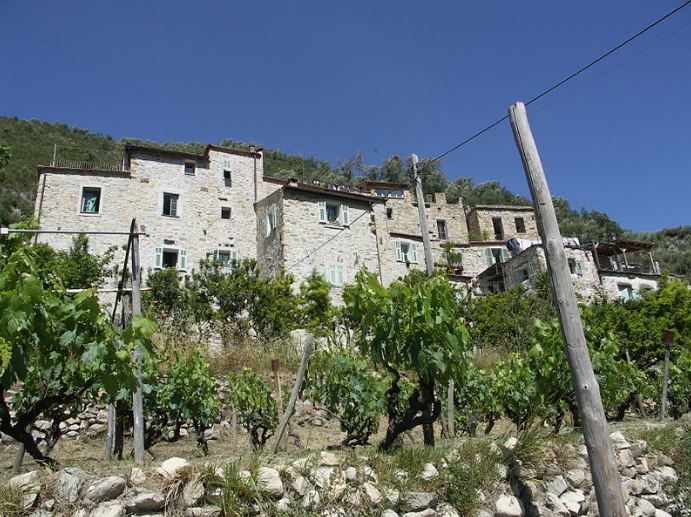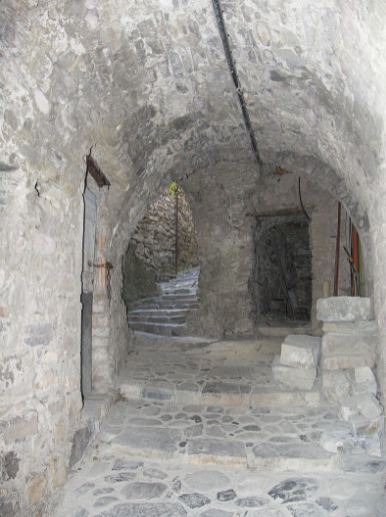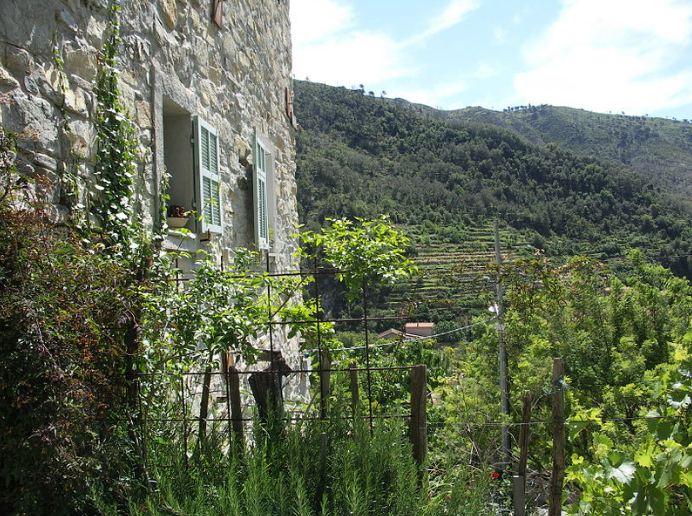Torri Superiore is a 13th-century medieval ecovillage located in Liguria, Italy. It is undoubtedly a gem of architecture and culture. Located just a few kilometers away from the Mediterranean Sea, Torri Superiore lies right at the foothill of the Ligurian Alps. The French border is also not so far away from this village.
Just 11 km away from the town of Ventimiglia, Torri Superiore is a member of GEN (Global Ecovillage Network), Accademia Italiana di Permacultura, and RIVE (rete Italiana Villaggi ecologici).
What is an Ecovillage?
An ecovillage is a community (intentional or traditional) specifically designed through locally owned participatory processes that work in all four (culture, social, economy, and ecology) sustainability dimensions. The main purpose of an ecovillage is to regenerate the natural and social environment of a place.
GEN categorizes the ecovillages into two categories, i.e., traditional and intentional ecovillages, which can be found in urban and rural areas.
1. Traditional Ecovillage
Traditional ecovillage is found in already existing rural communities in which the participatory processes and life-sustaining ways are used for carving the way towards the future.
2. Intentional Ecovillage
An intentional ecovillage is artificially created by people who have a shared and fresh vision of making a self-sufficient, eco-friendly residential community. Torri Superiore is also an intentional ecovillage as an intentional community turned an abandoned village into a self-sufficient ecovillage.
A Brief History of Torri Superiore
Torri Superiore is one of those places that were barely mentioned anywhere until someone discovered and restored it. The village of Torri was most probably founded somewhere during the 13th century, as the first-ever documented proof of its existence is found in the documents from 1073, with a sentence “Actum in Castro Ubi Ture dicitur.”
Although the origin of this ecovillage is uncertain, some presume that the village’s building was built in either the late 13th or early 14th century.
The late 13th century was a difficult time in both religious and social matters, which explains the unusual design of the building. It was built in a very secure way to provide protection to its residents. Moreover, the village is famous for its remarkable height, i.e., eight levels from the roof foundation.
The newest parts of this village were probably built somewhere in the 18thcentury. This was also when the population of the village was at its peak, and the ecovillage was thriving. The 18th-century additions to the village include a large hall (possibly a common kitchen), an intricate, open-air oven, and closely knitted rooms with terraces.
By the end of the 18th century, the original residents of Torri Superiore started to leave, and soon its people completely abandoned it. The beautiful architecture was turning into ruins when during the 90s, but some people discovered this village with the plan of restoring its beauty.
The Restoration of Torri Superiore
During the 90s, a group of people planned the restoration of Torri Superiore to make it a livable place for some new residents. Not just that, they also planned a very thoughtful recycling plan to keep the historical nature of this village alive.
With several years of research and a complete study of the village structure, the team responsible for the restoration of Torri Superiore came up with a restoration plan. The restoration process was quite complex; however, some local firms and volunteer efforts of the team members helped in the restoration of the ecovillage.
Since 1997, 14 out of 20 residential units of Torri Superiore have been restored, while the rest are still under construction. An ample section of the culture center has also been restored.
Torri Superiore a Self-Sufficient Ecovillage
With the restoration of the medieval village of Torri Superiore, the plan of making it a self-sufficient ecovillage was also considered. The main purpose behind creating an eco-friendly village was to promote a natural and healthy lifestyle with a reduced carbon footprint.
During the two decades of renovating Torri Superiore, only local stone, natural insulation, and natural lime were used to keep this place’s aesthetics unchanged. Along with that, the ecovillage enjoys the fresh and organic produce from the organic permaculture fruit orchards and gardens.
No inorganic foods are used in this ecovillage, and the residents make their own bread, honey, jams, and olive oil for daily use. Animals like goats wander around the village freely, while almost all the residents have their own mini chicken farms. These animals and birds enjoy the natural habitat and provide eggs, milk, and meat for the residents of Torri Superiore.
Solar panels support the electricity and water supply to keep everything natural and eco-friendly. However, there is a little dependence upon the grid in the village right now, but with the installation of more solar panels in the near future, the village will totally cut free from the grid, producing its own electricity.
Visitors and Members at Torri Superiore Ecovillage
Currently, Torri Superiore ecovillage has twenty-one members, and the village is open and welcomes new members and visitors. However, the process of becoming a member can be quite complex due to the volunteering, long visiting periods, and building friendly relationships with the residents. The community does have a proper and established membership process, along with a trial year, as things can be interrupted due to any issues.
Moreover, the community is all about volunteer work as they do not provide any paid jobs neither free accommodation. But the good thing is that the applicants who are interested in living in an ecovillage can be invited for a visit as a guest.
How are Ecovillages Restoring the Ecosystem?
Ecovillages are helping in the restoration of ecosystems around the world. These villages aim to restore the natural water cycles, sustainable food systems, permaculture orchards, biodynamic or organic farming, solar power, hydroelectric energy systems, and renewable biomass.
Ecovillages use as few resources as possible to save the ecosystems in the world. Along with that, these communities do not rely on the regional or national supplies of electricity or gas to survive, which makes them a lot more beneficial.
However, some financial barriers still cause problems in setting up ecovillages, but the benefits of ecovillages for the restoration of ecosystems are worth investing in.
Conclusion
Right now, Mother Earth is going through naturally hard times, and ecovillages are quite helpful for restoring natural resources. Torri Superiore is another great option of residence for people who want to make a change for the betterment of the world ecosystem. As we mentioned earlier, anyone can apply for the membership of Torri Superiore ecovillage and live there.



